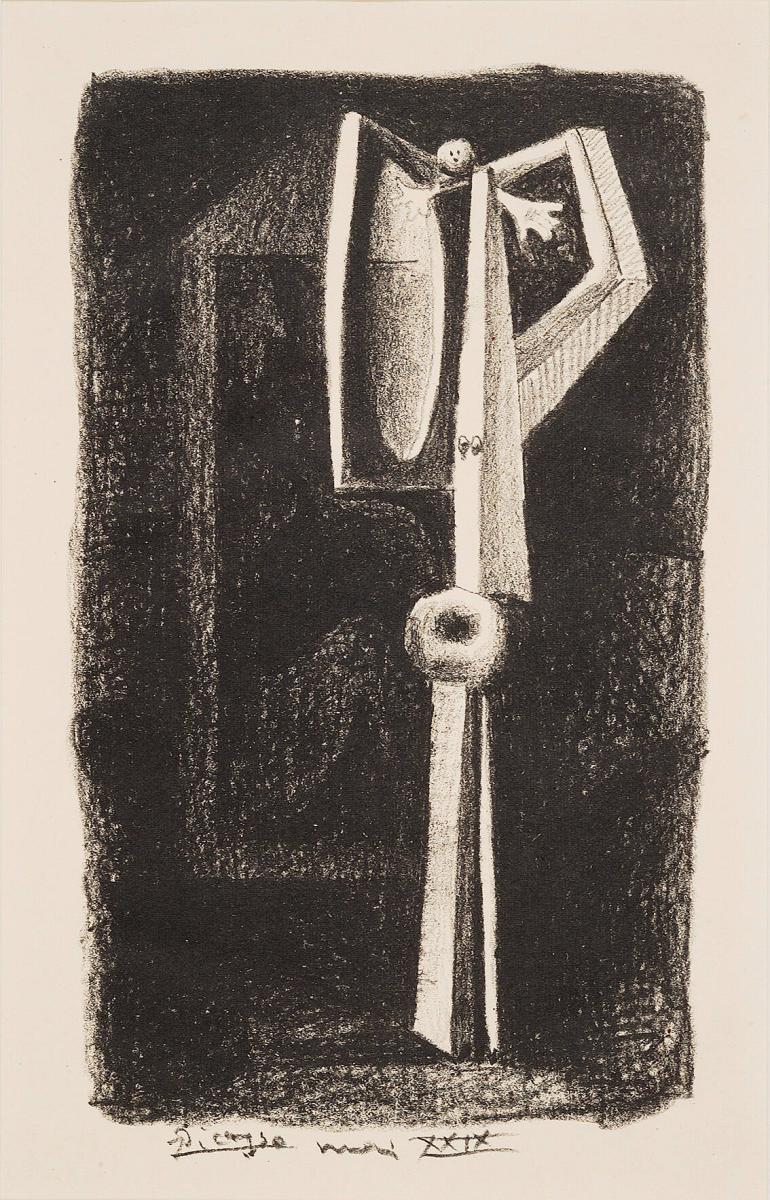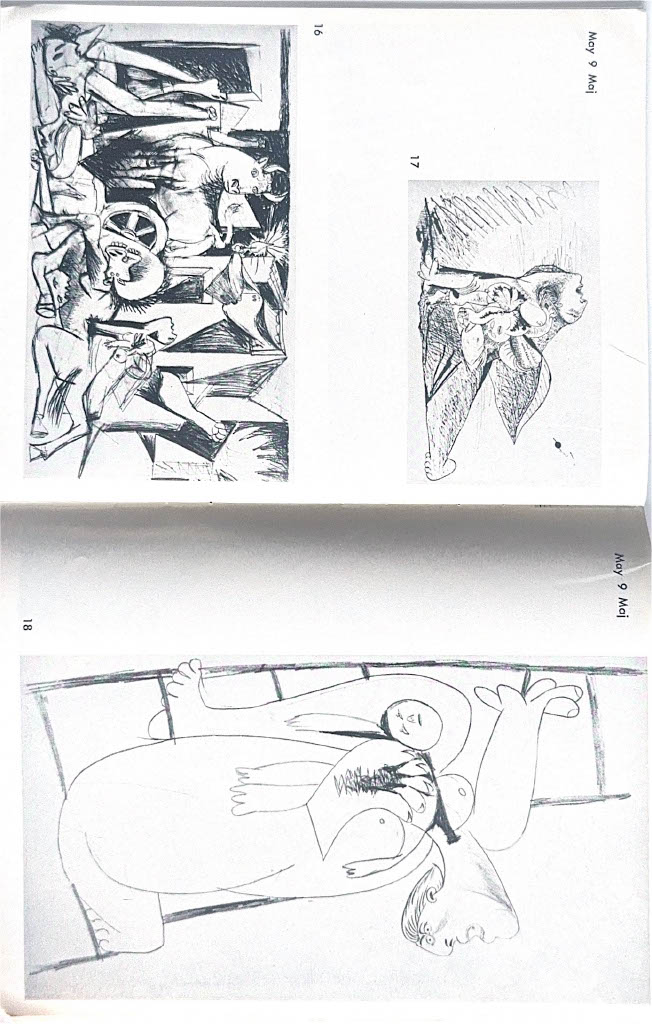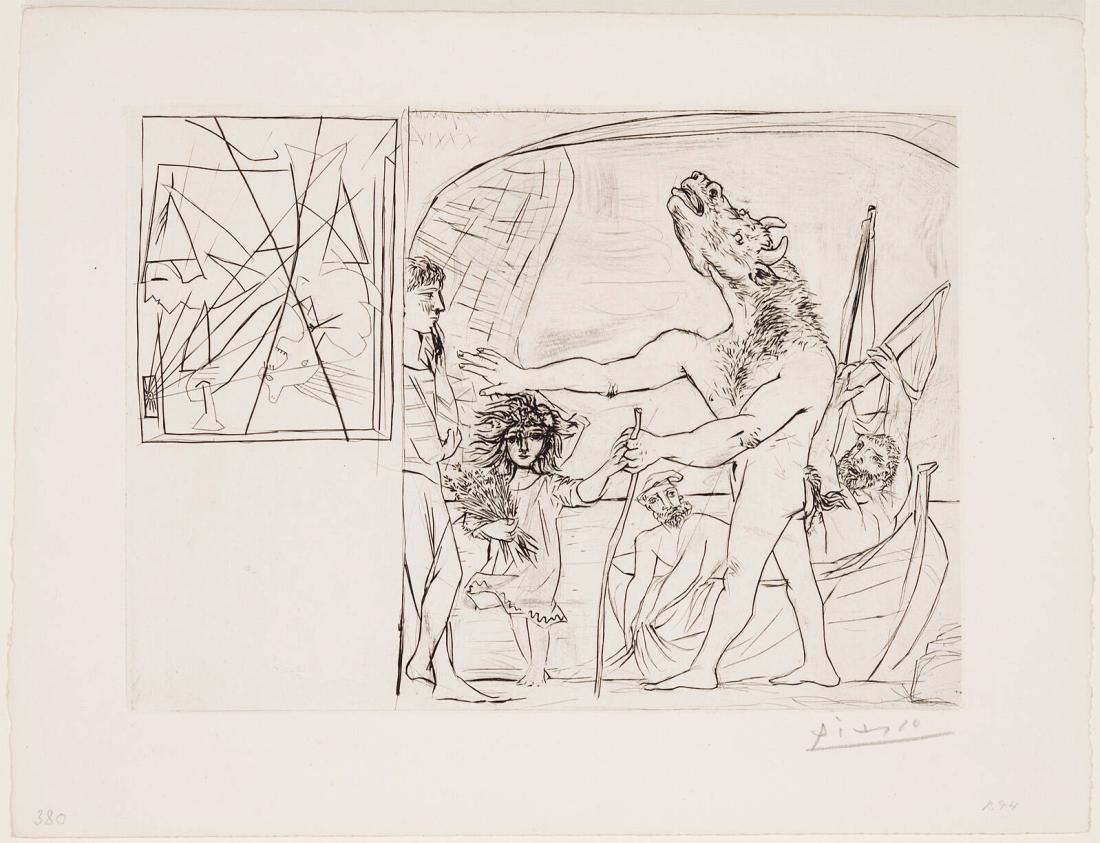A Hole in the Real: Dora García, Pablo Picasso, and the Legacy of Mining
8 November 2025—19 April 2026
Exhibitions
Plan 2
Sixty years ago, a remarkable art outreach project took place in Kiruna: more than one hundred works by one of the most celebrated artists of the twentieth century were exhibited at Kiruna City Hall under the title Picasso in Kiruna. The artist was eighty-four-year-old Pablo Picasso (1881–1973), and the works were on loan from Moderna Museet, the Nationalmuseum, the Gothenburg Museum of Art, and private collectors. This unique initiative was undertaken to mark the seventy-fifth anniversary of the mining company LKAB. What could have been more fitting than to pair the state-owned company—seen as a spearhead of modern society and dominating Kiruna then, as it does now—with the most renowned artist of the avant-garde?
Kin Museum of Contemporary Art has borrowed sixteen of the artworks that Moderna Museet made available for the 1965 exhibition, which are now traveling from Stockholm to Sweden’s northernmost municipality for the second time. The works include fourteen graphic prints and two bronze sculptures. The museum has also invited Dora García—born and raised in Madrid and now based in Oslo, where she is a professor at the Academy of Fine Art—to create a new work from a contemporary perspective, taking the 1965 Picasso exhibition in Kiruna as a point of departure. Her view of Picasso’s work and the anniversary exhibition is distinctly contemporary, addressing issues such as the artist’s political engagement, natural resources, land rights, and the role of art in the 2020s.
The exhibition’s title—A Hole in the Real: Dora García, Pablo Picasso, and the Legacy of Mining —is borrowed from an earlier work by García that references the psychoanalyst Jacques Lacan’s (1901–1981) idea of a point in reality where language and meaning collapse.
Picasso in Kiruna ran from September 3 to 12, 1965, and was made possible through financial support from LKAB and the municipality of Kiruna. Without the mining company’s guarantees for the considerable insurance amount, the exhibition would not have been possible. It was organized by the Nationalmuseum in Stockholm, in close collaboration with Moderna Museet and the Norrbottens Museum. Moderna Museet sent its curator and legendary art educator Carlo Derkert to Kiruna, where he delivered lectures to miners during their lunch breaks. The exhibition formed part of an ambitious art outreach initiative reflecting the spirit of the time—aimed at making culture accessible to all layers of society through newly established infrastructures, such as centers for photography and arts and crafts.
Sixty years later, perspectives on Picasso have shifted, yet questions about the role of culture, the geography of power, and the possibilities of art remain just as urgent. Through Dora García’s work, A Hole in the Real: Dora García, Pablo Picasso, and the Legacy of Mining becomes both a springboard for reflecting on our shared future and a lens through which to revisit a singular moment in Swedish art history.
The exhibition is part of Kin’s multi-year inquiry The Critical Zone.
Image 2: Pablo Picasso, 1948. Femme debout.
Image 3: Page from Nationalmuseum's exhibition catalogue - 1956
Image 3: Pablo Picasso, 1934. Minotaure aveugle guidé par une fillette, I.


